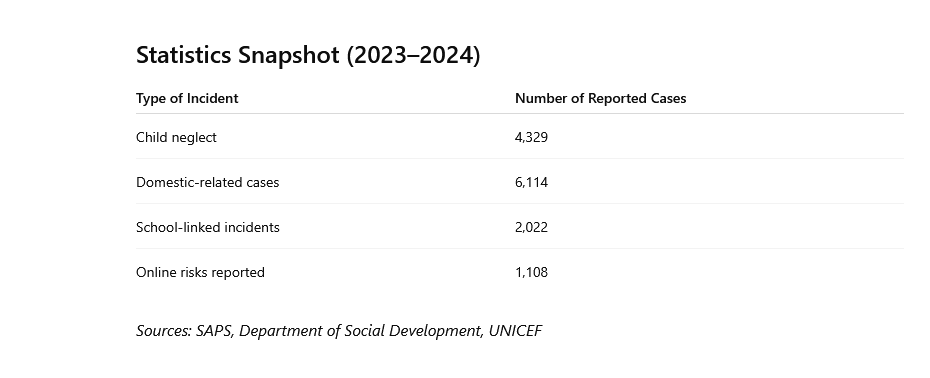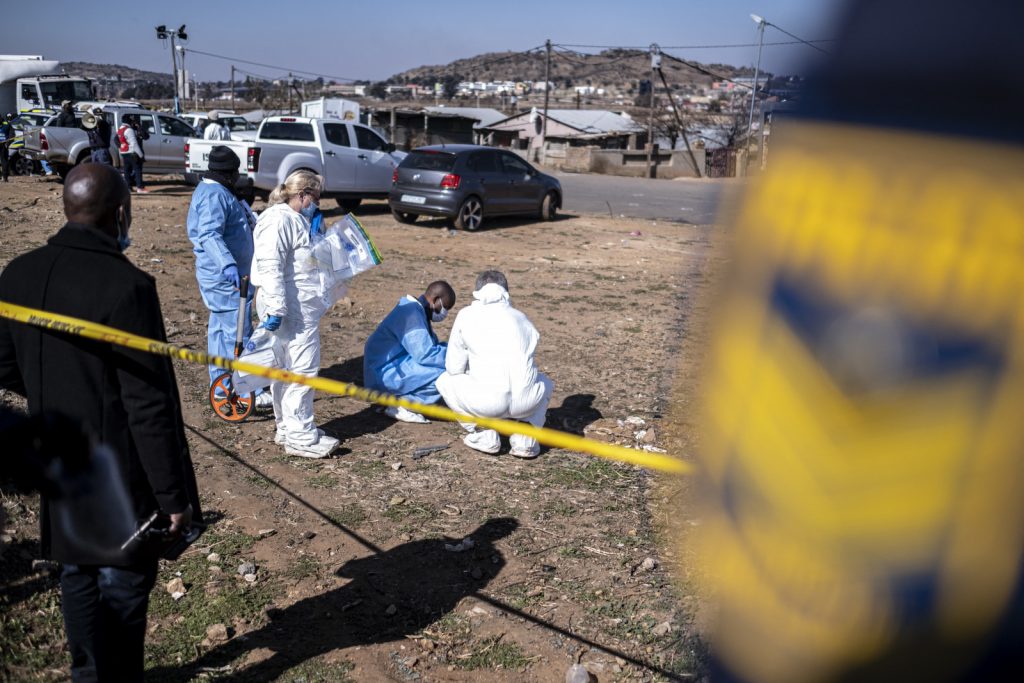Crime against children in South Africa is deeply troubling. Learn the scope, root causes, and actions being taken to protect the country’s youngest citizens.
South Africa hosts millions of vibrant, talented, and resilient young people. However, frowns of many children are caused due to a worrying trend: crimes that affect their safety, well-being, and future have started increasing. Largely underestimated and not given the attention they deserve, these are a silent emergency calling for the mobilization of all the forces in the country.
This article scopes the nature and extent of child-related crimes in South Africa, going from threats at home to challenges in the community, while bringing into sharp contrast positive interventions and the road to a safer and more caring environment.
Challenges
According to the South African Police Service (SAPS) and UNICEF South Africa, this accounts for thousands of incidents reported on an annual basis involving children:
Neglect and abuse
Exposure to domestic violence
• Incidents at schools
• Threats and abuse on the Internet
From April 2023 to March 2024, the SAPS noted:
• 17 481 crimes reported against minors, though the true number is likely much higher, since there is under-reporting and the matter carries a social stigma.
“Children happen to be the most vulnerable members in any society, and the onerous task of ensuring their protection is to be viewed as a responsibility of all members of the society,” said Thulani Nkosi, who is the Child Advocate for ChildSafe South Africa.
Where are the children at most risk? Consider the geographical and social indicators:
• Urban areas: general lack of supervision and high population density
• Rural areas: distance from support services
• Informal settlements: lack of stability in infrastructure
Children in these areas may face general challenges such as poverty, lack of access to education, and elements of unsafe home environments.
Learning institution and neighborhood setting
Some children get bullied, some face peer violence, or see unsafe routes between school and home. Others may get a little scared because of the crime in their neighbourhoods.
The crimes that affect children
The wording may be touchy, but it is key to know the different groups so communities can help better:
1. Neglect and domestic abuse
Instances where caregivers cannot meet basic needs, often because of poverty or substance abuse, may result in unsafe conditions for the children. Domestic violence
Conflicts between adults that result in harm or the fear of harm can impact the children emotionally and physically, even if not directed at them. Community-level threats
Gang-related activities, crimes in the proximity of schools, or the unavailability of safe spaces can indirectly compromise the well-being of the children. Online safety threats
Access expansion of the Internet needs the growth with also the need for guidance on online behavior, especially in relation to strangers, exposure to content, and privacy.

What is being done: Programmes and progress
Challenges notwithstanding, there has been a lot of positive initiatives that are eventually yielding results:
✅ Government actions
• Child Protection Register only keeps data of the incapacitated
• Thuthuzela Care Centres provide comprehensive care to the victim
✅ In addition to School Safety Programs that include the promotion of peer support, anti-violence campaigns, and counseling
• Community and NGO actions
• Childline South Africa which has a 24-hour toll-free helpline and mobile outreach
• Teddy Bear Foundation, which gives medical and psychological support to the victim
• Safe Park Initiatives giving supervised recreational spaces for children in municipalities
“When children feel safe and valued, they thrive,” says Dr Lerato Maseko, a child psychologist in Johannesburg.
Chart: Crimes involving children (trend 2015-2024)
Source: SAPS, UNICEF, DSD
Key priorities for a safer future,
Stronger family and social support,
• Parenting programmes
• Financial and nutritional support for vulnerable households
• Emotional and educational development programmes
Safer school environments
• Training of teachers and staff in child protection
• Strengthening school patrols and support teams
• Coping with bullying and peer violence
3. Online consciousness and safety
• Fitting the child’s age for digital education
• Support parental watch and talk openly
• Work with tech providers for children’s safe digital spaces
4. Outside help
• Groups in the area that focus on child safety
• Teaching the caregivers, teachers, and social workers
• Encourage children to speak up and use support safely
Protecting children is not only a moral responsibility – it is a sound investment in the future. Child crime is complex and needs a collective, caring and coherent response.
By supporting safer homes, schools and communities and by giving children the knowledge and resources they need, South Africa can turn this silent emergency into a national success story of care, prevention and progress.
The most common safety threats to children in South Africa include neglect, domestic violence, and safety issues at school, as well as exposure to community crime and online threats.
Do the children themselves report these incidents?
In most cases, it is teachers, healthcare workers, or any other community member who reports the case. Children may not report the case by themselves, so creating safe spaces is essential.
What support is available for affected children?
Organizations like Childline, the Teddy Bear Foundation, and government social service, school safety programs. yes especially when they reach the whole school community and offer ongoing support and monitoring what role parents and carers can play they are the first line of defense they help children feel safe by listening observing and encouraging open conversation is the situation improving
Awareness and resources are on the rise, but under-reporting and gaps in resources still remain challenges that need ongoing work.
